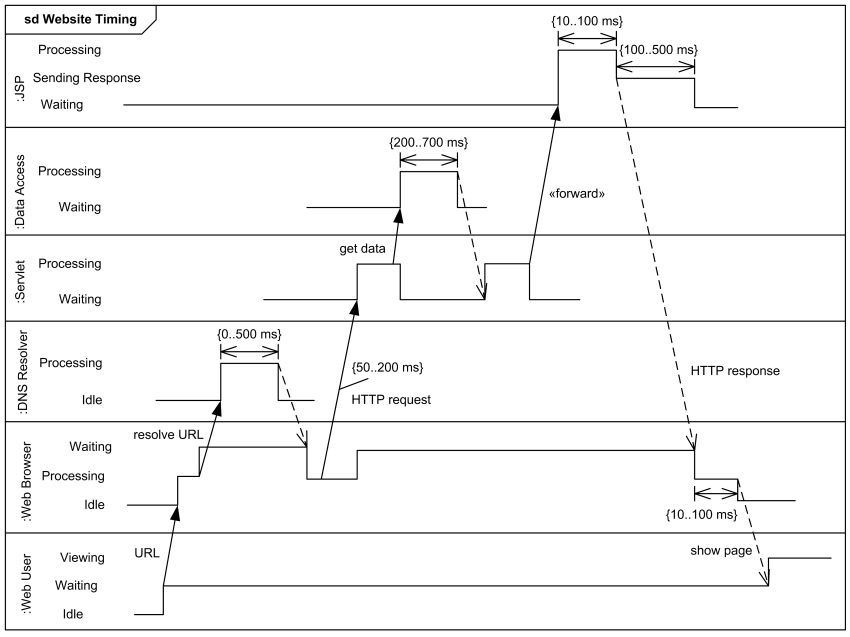It's not possible to do this with PlantUML (yet).
However, the drawing does not look too difficult to implement.
The real issue is the textual syntax for such a diagram. So we need your contribution : could you make a syntax proposition that would describe your example http://www.uml-diagrams.org/examples/timing-diagram-example-website.png ?

If you find a nice, human understandable and complete textual description for such an example, we would be glad to implement it.
What do you think about it ?